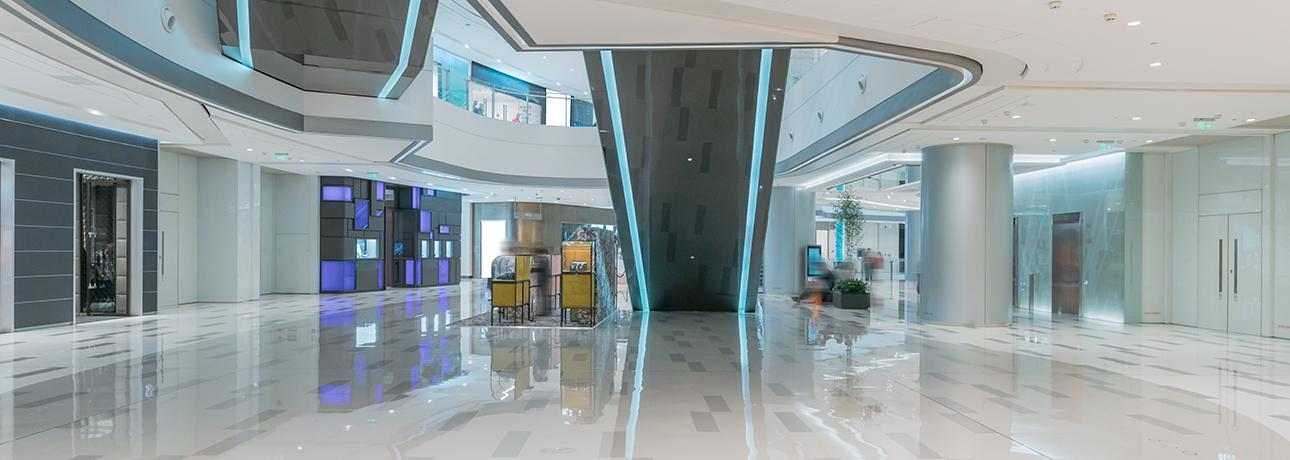In high-traffic retail settings, keeping floors well-maintained is key for upholding cleanliness, minimizing abrasions and reducing slip-and-fall hazards. However, certain maintenance methods like stripping and refinishing can be costly and time-consuming. Retailers that are installing “low-maintenance” floors still need to understand how to preserve the look, safety and lifespan of floors. Thankfully, new floor care options can have a positive impact on appearance, the bottom line and sustainability.
The Trend to Lower-Maintenance Floors
Although every retail store’s floor maintenance plan varies depending upon the desired appearance and the amount of daily foot traffic, facilities typically utilize daily cleaning, regular burnishing, scrub and recoat processes, and stripping and refinishing to care for floors.
Stripping and refinishing should occur once or twice a year, or even every few months for busy stores. This requires removing old layers of finish and then adding four to eight new coats. Although necessary, stripping and refinishing requires stores to block off areas to allow for work to be completed and floors to dry. The chemicals used are powerful and can produce unpleasant odors that bother customers. Additionally, refinishing is an expensive investment that requires lots of finish and labor.
To reduce costs and time spent on floor care, many retailers are transitioning to lower-maintenance substrates like concrete, terrazzo, marble and stone. However, it’s important for facility managers to understand that these floors still require regular attention. Some opt for ultra-durable coatings that require minimal upkeep. Unfortunately, if floors become scratched with these coatings, the abrasions cannot be removed.
The Power of Diamonds
When floors are glossy, they project an image of cleanliness while those that are dull give off a dirtier appearance. Since a facility’s floors can serve as a lasting first impression for guests and help build brand loyalty, it’s important that they always look their best.
Stores once had to utilize both mechanical and chemical components in their floor care routines, first polishing floors with a floor care machine, then applying a chemical protector for stain, slip and abrasion resistance, and then finishing with a cleaner maintainer to add gloss.
However, there are now floor pads available that use billions of microscopic diamonds to simultaneously clean and polish floors. These pads are used with conventional floor care machines and don’t require the use of chemicals – water combined with these powerful pads will remove dirt and buildup from floors as well as unsightly abrasions. The result, beautiful natural looking floors that are safer for guests and employees.
In addition to introducing a more sustainable approach to floor care, pads like TwisterTM/MC diamond pads can reduce the need for periodic floor maintenance because daily polishing is being conducted. Twister pads deliver productivity and cost savings by reducing the need for more extensive floor maintenance and restoration. Their lifespan is also three times that of a traditional floor cleaning pad.
An Easier Approach to Floor Care
To minimize business disruption and costly stripping and refinishing processes, many retailers have transitioned to lower-maintenance floors. While easier to maintain, these substrates still require proper care. To eliminate the use of abrasive chemicals and reduce maintenance costs while keeping floors glossy and safe for employees and guests, stores can now use diamond pads that are specifically designed to clean and polish floors at the same time. This ensures an instantaneous return on investment!
To learn more about floor care solutions from Diversey to support your retail business, visit www.diversey.com/solutions/floor-care or reach out to us at [email protected].



